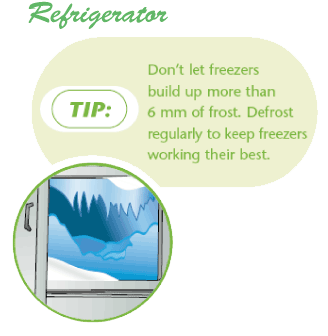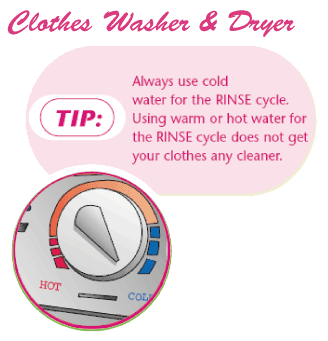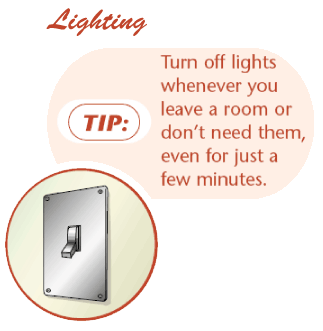Consumer Tips

Your electric bill maybe eating-up a big part of your monthly budget…well there are several reasons why…
We have provided several tips to help you save energy.
Tips:
- Set the temperature for only as cold as you need; check manufacturer’s recommendations.
- Don’t keep that old, inefficient refrigerator running in the basement for occasional refreshments.
- Don’t overfill the refrigerator, as this blocks air circulation. Conversely, a full freezer will perform better than an empty one.
- Check your refrigerator’s door seal by closing the door on a 20 peso bill. If it’s held tightly in place, the seal’s OK; if not, the door should be adjusted or the seal replaced.
- Clean your refrigerator’s coils (back) and air intake grill (below the doors) every 3 months.
- Keep refrigerators and freezers out of direct sunlight, and allow at least 5 centimetres all around (or as recommended by the manufacturer) to allow heat to escape from the compressor and condensing coil.
- Allow hot foods to cool before putting them in the refrigerator.
 Tips:
Tips:
Washer
- Run full loads whenever possible but don’t overload the machines.
- Wash your clothes in cold or warm water. A whopping 85-90% of the energy used by washing machines is for heating the water! You can save a lot of energy by lowering the water temperature.
- Try using cold or warm water for the WASH cycle, instead of hot water. Hot water shrinks and fades your clothes, and wears them out more quickly.
Dryer
- Make sure clothes are effectively wrung before putting them in the dryer. (Front-loading washers are the best at squeezing the water out!)
- Separate loads into heavy, medium and lightweight items – lighter loads will take less drying time than a mixture of items.
- Dry consecutive loads to utilize otherwise wasted heat from the dryer.
- Clean the lint filter after every load. (A clogged lint filter can increase energy use up to 30%, and may be a fire hazard!)
- Get some fresh air! Consider using a clothesline to dry your laundry.
Tips:
- You can lower overall energy demand by concentrating bright light where you need it rather than evenly lighting the entire room – this is called ‘task lighting’.
- Opening your blinds is a free way to brighten up a room.
- For any light that must be on all night (e.g., stairways), replace the bulbs with the lowest wattage bulbs that you’re comfortable with or consider a compact fluorescent or a nightlight.
- Decorate your home with illumination in mind – lighter colors reflect light, so use them in areas you want to be bright.
- Keep light fixtures clean – a cleaner bulb is a brighter bulb.

Tips:
- Consider energy-efficient computer systems and monitors when you replace a system. Make sure you enable your computer’s energy-saving features.
- Be sure to at least shut off the computer screen, as 60% of the power used by a computer is used by the monitor! (The other 40% is used to keep your hard drive spinning and to power the electronics.)
- Put your home entertainment systems on a power bar and turn off the bar when you are not using them. (Components without clocks and timers, of course.)
- Unplug infrequently used TVs, as many continue to draw power even when turned off.
Tips:
- To save money on heating costs, reduce the temperature of your home a few degrees at night and when you’re away.
- Keep blinds, shades and drapes closed during the hottest part of the day in the summer.
- Use area rugs on cold floors – if your feet are cold, your body will feel cold.
- Clean or replace the air filter on your furnace every month to improve efficiency.
- To save more on central AC costs, try cooling your home to only 24 or 25 °C instead of the low 20’s. Each degree below 26 °C will noticeably increase your electricity use!
- Turn off unnecessary lights in the house (they produce a lot of heat which works against the AC.)


